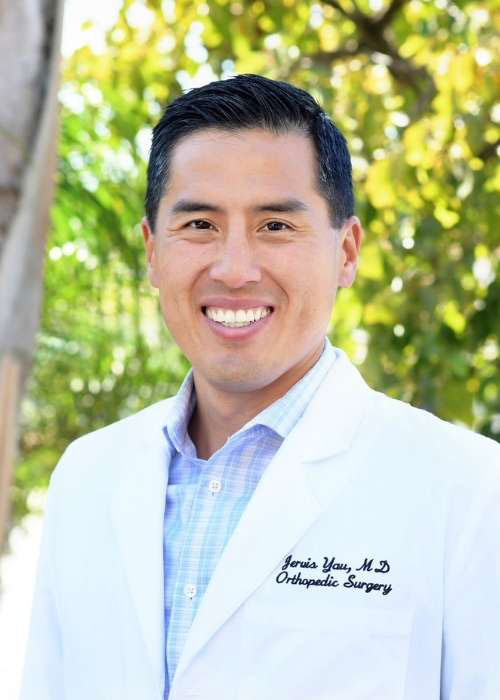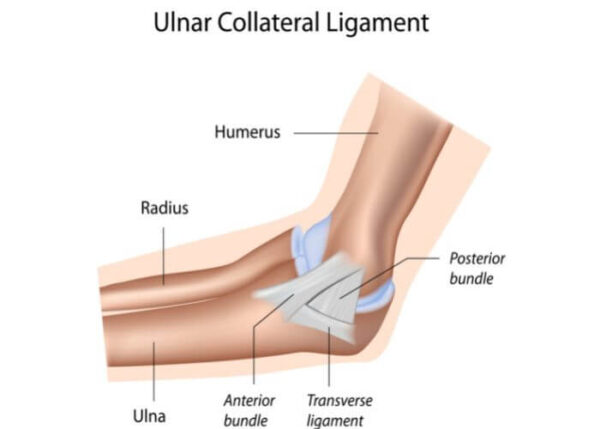Ulnar Collateral Ligament (UCL) Injury Specialist

Are you an athlete who participates in repetitive overhead movements? If so, you may be at risk of developing an ulnar collateral ligament injury (UCL). The UCL is commonly injured in throwing activities or after an elbow dislocation, typically from a fall on an outstretched arm. UCL injury spcialist, Dr. Jervis Yau provides diagnosis and both surgical and nonsurgical treatment options for patients in Santa Barbara who have developed a UCL injury. Contact Dr. Yau’s team today!
What is a UCL Injury?
The ulnar collateral ligament (UCL) is a band of tissue that connects the inside of the humerus (upper arm bone) to the inside of the ulna (forearm bone). This ligament plays an important role in stabilizing and supporting the arm during everyday movements and athletic activities. The UCL can tear when placed under extreme stress from repetitive overuse such as in throwing or during a traumatic event. Santa Barbara, Goleta, Santa Maria and Ventura, California orthopedic elbow specialist, Dr. Jervis Yau focuses on diagnosing and treating UCL tears and its associated injuries.
How does a UCL Injury Occur?
UCL tears are caused by a fall on an outstretched arm, an elbow dislocation or chronic overuse such as commonly found in overhead throwers. Once the ligament becomes stretched or partially torn, the patient will be prone to developing pain and weakness. UCL injuries are graded as follows based on severity:
- Grade 1 – Ligament is strained but not stretched
- Grade 2 – Ligament is stretched or partially torn (low-grade)
- Grade 3 – Ligament is torn. Either high-grade partial or complete tears
What are Symptoms of a UCL Injury?
Symptoms of a UCL injury include pain at the medial elbow, swelling, stiffness, weakness and joint instability. During an acute tear, patients may experience a pop at the medial elbow, followed sometimes by a zinging sensation that radiates down the forearm into the hand.

How is a UCL Injury Diagnosed?
Dr. Yau will perform a medical review and physical examination to diagnose the injury. During the examination, he will perform a valgus stress test to determine the level of elbow instability and assess the pain associated with it. A series of x-rays and MRI are usually performed to assess the severity of injury.
What is the Treatment for a UCL Injury?
Non-Surgical
UCL injuries can often be treated through a non-surgical approach including activity modification, ice, anti-inflammatory medications and physical therapy. Platelet rich plasma (PRP) injections have also shown promising results in decreasing pain and increasing function after injury.
Surgical
Surgical reconstruction of the ulnar collateral ligament is indicated for full thickness tears in throwers and those who do not respond to conservative treatment. A torn UCL is surgically reconstructed using one of the patient’s own tendon and is more commonly known as “Tommy John Surgery.” During the procedure, Dr. Yau will typically take the palmaris longus tendon to reconstruct the damaged ligament. Sometimes, one of the hamstring tendons may be used if the patient does not have a palmaris tendon.
For additional resources on a UCL injury, such as an ulnar collateral ligament tear, please contact the orthopedic office of elbow specialist Dr. Jervis Yau, located in the Santa Barbara, Goleta, Santa Maria and Ventura, California area.